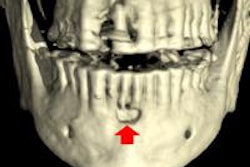Dear AuntMinnieEurope Member,
Arguably it was the most bizarre and logistically challenging act ever performed in an MRI scanner: a man and a woman engaged in sexual intercourse. Eight couples and three single women participated in the ground-breaking -- or earth-moving? -- Dutch research during the 1990s, culminating in a legendary article published in BMJ.
How was the study done and did it reveal anything meaningful? And what follow-up studies are planned? To find out, go to our MRI Community, or click here.
When a hospital signs a new teleradiology outsourcing contract, often radiographers are the ones who suffer most because of the likely increase in out-of-hours scanning. To avoid this and other pitfalls, Dr. George McInnes has some practical advice, and you can get it in our PACS Community or by clicking here.
The British Museum's exhibition about Egyptian mummies, "Ancient Lives, New Discoveries," has been a roaring success, and now there are plans to take it overseas. CT lies at the heart of this exhibition, as you will see in this article.
Over recent weeks, many peer-reviewed journals have issued press releases about their latest impact factor. But the Maverinck has grave doubts about the true value of these rankings, and he's voiced some strong criticisms in his latest column. Don't miss it here.
Finally, U.K. researchers reckon it's time to think again about the use of computed radiography (CR) detectors when it comes to spotting breast cancer. In their study, mammography based on digital radiography performed significantly better than CR for identifying calcification clusters and noncalcification lesions. Visit our Women's Imaging Community, or click here.




















